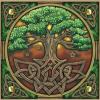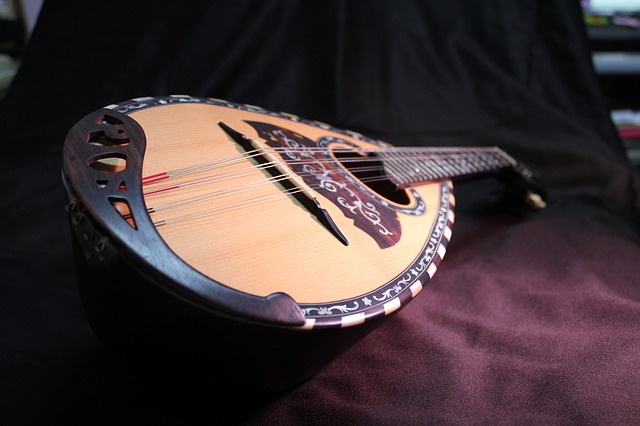 Submitted by Gideon Aedrini on
Submitted by Gideon Aedrini on

pixabay.com
by Laszlo Horvath
LOVE has many meanings with no shortage of delusions. The mythologist Joseph Campbell described three kinds of love. Love as Eros, as sexual energy. The second as agape, a universal religious love, as the love for thy neighbor. The third kind of love is fin amour, fine love, the passionate love of the troubadours.
A troubadour is commonly associated with jugglers, court jesters, minstrels, and medieval entertainers, but very few know them as the Worshippers of Love. These lyrical poets and musicians flourished in the stability of 12th century Southern France, a part of Christendom considered the most civilized and wealthy. The troubadour voice captured the imagination of the populace as they wrote their poems in vernacular and not in the official Latin literature. The word troubadour originates from troba, “to find or invent.” And indeed they invented, as the troubadour’s vision of love touched the depth of the collective psyche, a movement Church officials described as the spread of a disease.
For the first time in modern Western culture, man and woman awakened to love as a person-to-person relationship, a calling for the meeting between two souls. The emphasis on personality is what made their message radical, and here we find the birth of individualism. According to psychologists, the troubadour vision of love is one of the most powerful psychological surges in Western culture — no other culture followed the ideals of romantic love on such a mass scale. Even today, we find cases in which love was not associated with marriage but for status and economic arrangement
What we know is that the troubadour vision of woman radically altered the relationship between the sexes, a movement toward emancipation of woman. In a period of two centuries, more women became saints; many cathedrals built in the Virgin Mary’s name. At this time, we hear about adventurous romances; Percival and his quest for the Holy Grail and other legendary figures like Merlin and his red and white dragons. The Troubadours were also called Knights of the Grail, and it is in their quest for a holy object that reveals the troubadour spirit of intent. The Grail symbolizes the attainment of the higher Self, synonymous with the alchemist’s Philosophers Stone, awakening of consciousness. Although we know this era as the dark ages, and indeed they were dark with the abuse of women; nevertheless, a light of civilized wisdom prevailed. In this civilized wisdom, we find the voice of the troubadours.
The troubadour’s message attempted to balance a one-sided patriarchal society. It meant challenging the medieval meaning of marriage, questioning a social-religious system designed to keep women repressed. Women were at the mercy of their husbands, owned and possessed under the marriage contract. Wives were kept under control in a social atmosphere without legal rights, and the lawlessness that prevailed left women vulnerable to rape and abductions. Perhaps the reason we do not hear about the troubadours is because they have been branded as chasing after married women – as fornicators; that instead of attempting to live a spiritual life, they were scoundrels with their adulterous passions. But to judge the troubadours as merely adulterous is to dismiss the wretched implications of medieval marriages.
To the troubadours, real marriage is a spiritual bond, and not possession and ownership. Joseph Campbell writes, “Love was a divine visitation, and that’s why it was superior to marriage. That was the troubadour idea.” The psychodynamics of feudal marriages had no freedom for real love to bloom between two souls.
The troubadours did not deny the existence of love in arranged marriages, but such unions did not have the same seizure as in a real passionate love. And there is little evidence that the troubadours were physically adulterous, but more like adulterous in their fantasies. At the same time, troubadour love was not restricted to married women. It is possible that the troubadours projected their poetic imagination onto a lady, and it did not matter whether she was married or not.
We can find many academic books about the troubadours, written in colorful historical language, attempting to integrate the many fragments of courtly love. At least there is common consensus: a lot of spadework needs to be done, analysis of bits and pieces, before we can understand the whole troubadour drama. What happened eight hundred years ago is like a jigsaw puzzle. We know only historical fragments, and there are many ways of putting parts together. What we know is that two opposing poetic schools existed among the troubadours: the realists, and the spiritual or idealists. These two schools wrote in distinct styles: the realists in trobar leu, light-reading poetry; while the idealists wrote in trobar clu, which was more of an obscure poetic expression talking about a transcendental religious love.
False Troubadours
The Roman poet Ovid influenced troubadour poetry. After sitting dormant for a thousand years, Ovid’s work resurfaced in the 12th century; before his writings were considered subversive. His poems as Ars Amatoria, Art of Loving, accent the sensual side of love. Men are meant to seduce women for their pleasure and enjoyment. Ovid’s view of love did not restrict either men or women to one affair at a time, an expression of impersonal love — unlike the spiritual troubadours in which fin amor was a one-person love. From Ovid’s sensual view of love originated the idea that the best partner in a love affair was another man’s wife. However, the spiritual troubadours talked about a love that exists beyond indulgence of the senses, a love that strives for something divine.
The confusion between Ovid’s sensual love and troubadour spiritual love may be another reason the troubadours have been historically slandered. Of course, there were bound to be troubadours oscillating from one philosophy to another to suit the circumstances of their art of seduction, so confusion about the troubadours is inevitable. After all, it is much easier to follow the sensual instead of the spiritual path. There were bound to be false troubadours, those who diverted from a sincere spiritual quest. Such is the all too human side when a man follows an ideal and fails by his words and behavior. Poseurs are everywhere, and they come in all disguises, pretending to follow an ideal but relinquish to the pursuit of personal pleasure. The troubadour Bernart Ventadorn writes, “Ah God! Would that the true lovers were recognizable from among the false, and that slanderers and deceivers wore horns on their foreheads!”
In history we find that anything original, as the concept of troubadour love, spreads into mass culture, turns into an imitation of the original We find this in the 1960s, the cultural revolutionary ideas of the so-called hippies, the idea of world peace and love – turned cheap and artificial once the ideology becomes mass-produced through business and media. This may have happened to the troubadours, the jewel of an original idea turned banal through Church propaganda.
There are also scholars who dismiss courtly love as a form of entertainment, a glorification of the adulterous passion. Historians may describe Bernart de Ventadorn, the greatest of all troubadours, as a man with a repressed sexuality; that his excessive female fantasies are part of a psychological dysfunction. Although historians agree about the existence of mystical love groups, there are those who believe the troubadours are only an imitation of an authentic spiritual tradition. Barbara Tuchman writes about courtly love: “It remained artificial, a literary convention, a fantasy (like modern pornography) more for purposes of discussion than for everyday practice.”
The above view fails to appreciate the troubadours and their connection to the gnostic Christians. Robert Johnson wrote about the troubadours as the “off-spring” of the gnostic Cathars. It might be for this reason the Church eliminated both the Cathars and troubadours, for Gnosticism rejected the spiritual authority of the pope and bishops. With Cathar connections, we can see why the Church became upset with the troubadour religious version of love. According to the Church, physical love is strictly for procreation, while the troubadour believed that love with a woman is a pathway to salvation, a form of religiosity to find the real God of light and compassion. Thorough woman, a man may awaken in knowledge as in gnosis, the same path the Buddhist and Hindu’s spoke about, about the idea of transcending the material world into a higher level of awareness; call it cosmic consciousness, nirvana, or Christ consciousness – the troubadours aspired to attain this elevated state through a love relationship with a lady.
On Valentines Day, schools do not teach about the troubadours, albeit the troubadour vision of romantic love ushered the birth of individualism. The troubadours were the alchemist of love preaching psychological freedom in love; that love is not about possession; love is not lust or jealousy. The troubadour spirit of intent was not for consummation of the relationship, but of channeling erotic reactions and emotions – in the same way in Tantra yoga, the erotica techniques to raise the serpent power of the Kundalini, a snake-like energy that runs up the spine to the brain. In a similar way, the troubadours attempted to channel their sexual energies in order to awaken the mind, a process of turning lead, as raw instinctual, into spiritual gold.
Love, according to the troubadours is not just about sexuality. We find no records in troubadour poetry talking about coitus or orgasm. The worst fear of the troubadour is to consummate a relationship through intercourse; for this reason they practiced “distancing love,” as a way of allowing the love and soul connection to brew. With this attitude of approach, they cultivated a state of delicious frustration, a spiritual aspiration to awaken the nous, awakening of intellect.
Laszlo Horvath is the author of Wilderness Alchemy and Masters of the Game.